O thick it is an ecosystem rich in several aspects, such as water and flora, but it is not limited to those mentioned, there are also birds of the cerrado. According to records of scientists, around 935 species of birds can be found in the cerrado, of which 787 are also found in other domains, and 148 species are specific to the cerrado. In the case of birds, it is difficult to define a bird as being specific to a single biome because of its ability to fly.
Given the brief introduction, below are the main typical birds that transit through the cerrado and that can also be found in other biomes.
Emma (American rhea)
Bird weighing approximately 30 kg, its meat can be used as food. This bird is constantly found in the field system. However, considering its distribution in other regions of the world, the International Union for the Conservation of Nature (IUCN) assigns it the status of an almost threatened species (NT, Near Threatened).
seriema (Cristata)
This bird has a relative weight of 2 to 3 kg, transits more frequently in the Campo de Cerrado subsystem. According to the IUCN, this species presents minimal risk of extinction (LC,
Least Concern).Peacock-do-pará (Eurypyga helias)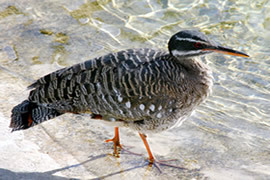
It has an adult weight of up to 500 g and is common in the riparian forests subsystem. According to the IUCN, it also presents minimal risk.
Jah (Crypturellus undulatus)
Bird with an approximate adult weight of 800g, it occurs more frequently in forest and riparian forest subsystems. This species presents minimal risk of extinction, according to the IUCN.
Inhambu-Xintã (Crypturellus tataupa)
In the adult phase, it reaches up to 100g, transiting more frequently in the cerradão, forest and riparian forest subsystems. It is also at minimal risk of extinction.
Inhambu-chororó (Crypturellus parvirostris)
A bird that weighs up to 150g in the adult phase, it is more common to find it in the cerrado, cerradão and forest subsystems. Minimal risk of extinction.
Northeast quail (Nothura Boraquira)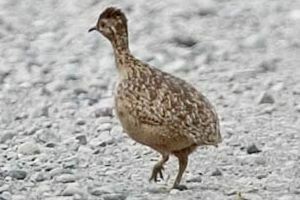
It weighs approximately 250g as an adult, transits more often in the field subsystem. Conservation status: minimal risk of extinction.
Long-eared Owl (asio clamator)
As an adult, it weighs up to 500g, occurs in the cerrado, cerradão and forest subsystems. Minimal risk of extinction.
Burrowing owl (Athene cunicularia)
Bird that weighs 150g in adulthood, is mostly found in the field subsystem. Minimal risk.
Cabure (Glaucidium brasilianum)
In adulthood, it weighs 100g, transits more frequently in the cerrado, cerradão and forest subsystems. Minimal risk.
Church Owl, or Pork (Tyto alba)
As an adult, it weighs approximately 400g and is mostly found in the campo and cerrado subsystems. Minimal risk.
Hyacinth Macaw (Anodorhynchus hyacinthinus)
A bird that weighs about 1 kg in its adult phase, it is mostly found in the subsystems of footpaths and marshy environments, but it can transit in all other subsystems of the cerrado. It presents itself in danger of extinction. (EN, Endangered)
Gray Macaw (Ara ararauna)
Adult weight: 1 kg. Minimal risk.
Great Red Macaw (Ara chloropterus)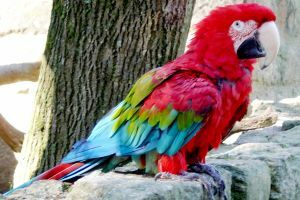
Birds that reach an adult weight of approximately 1 kg, transits through all subsystems. Minimal risk.
Gray Parrot (aestiva Amazon)
When adult, it weighs approximately 300g. Minimal risk of extinction.
Maracanã Parakeet (Aratinga leucophthalma)
Bird that has an adult weight of 300g, occurs in the subsystems of footpaths and wetlands and countryside. Minimal risk.
Cure curassow (Crax fasciolate)
Adult weight of about 2 to 3 kg, transits more frequently in the riparian forests subsystem. Minimal risk.
Jacucaca (penelope jacucaca)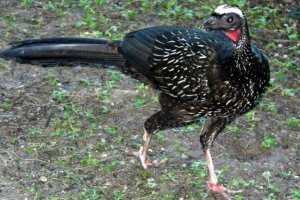
Bird that weighs about 500g in adulthood, transits more frequently in the cerradão and forest subsystems. It is vulnerable (VU, Vulnerable)
Pantanal Aracuã (Ortalis canicollis)
Adult weight of 500g, transits mainly in the subsystems of riparian forests, footpaths and marshy environments. Minimal risk.
Dove (Patagioenas cayennensis)
Weight of approximately 200g, it occurs more frequently in the subsystems of footpaths and wetlands. Minimal risk.
Exchange dove (Patagioena speciosa)
Adult weight of 200g, occurs in the subsystems of footpaths and marshy environments. Minimal risk.
Juriti-pupu (Leptotil verreauxi)
Bird that weighs approximately 200g in adulthood, transits more frequently in the cerrado subsystem. Minimal risk.
Flock Dove (Zenaida Auriculata)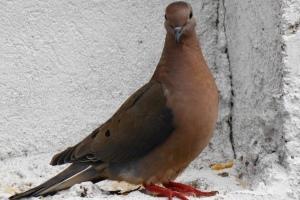
In adulthood, it weighs 300g, occurs in the field, cerrado and cerradão subsystems. Minimal risk.
Tucanuçu (Ramphastos touch)
The adult weight of the bird is approximately 250g, it transits more frequently in the field subsystem. Minimal risk.
Black-billed Toucan (Vitellinus Ramphastos)
Bird with an adult weight of approximately 250g is mostly found in the field subsystem. Minimal risk.
Brown Aracari (Pteroglossus castanotis)
As an adult, it weighs approximately 200g, transits more frequently in the cerrado, cerradão, forest and riparian forests subsystems. Minimal risk.
Collared Cheetah (callonetta leucophrys)
Bird with an adult weight of approximately 1.5 kg, it occurs more frequently in the subsystems of footpaths and marshy environments. Minimal risk.
White wing (Dendrocygna autumnalis)
Bird with an adult weight of approximately 1kg, it occurs more frequently in the subsystems of footpaths and marshy environments. Minimal risk.
Red foot (Amazonetta brasiliensis)
As an adult, it weighs approximately 1kg, transits more frequently in the subsystems of footpaths and marshy environments. Minimal risk.
Anhuma-poca, or tachã (Torquat Chauna)
Bird weighing approximately 3 to 4 kg in adulthood, both occur in the subsystems of footpaths and marshy environments. Minimal risk.
Egret (Ardea cocoi)
It can reach approximately 3 kg in adulthood, it is mostly found in the subsystems of footpaths and marshy environments. Minimal risk.
Curicaca (Theristicus caudatus)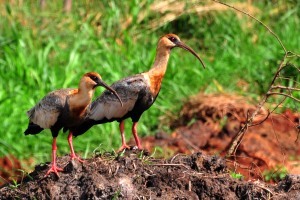
Bird that weighs approximately 1 kg in adulthood, transits more frequently in riparian and grassland subsystems. Minimal risk.
Eduardo de Freitas
Graduated in Geography
Brazil School Team


